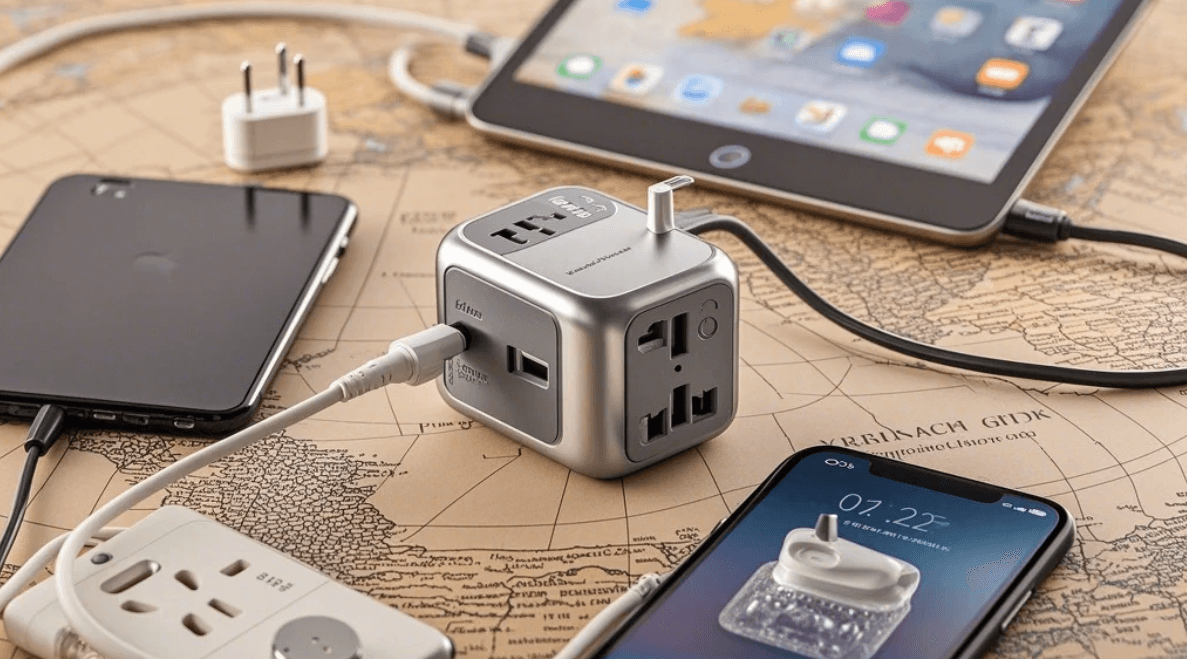Travel Adapters and Converters for International Trips
| Traveling internationally is an exciting adventure, but it often comes with the challenge of keeping your electronic devices powered and functional. Different countries have different plug types, voltages, and frequencies, which can make charging your devices a hassle if you’re not prepared. Enter travel adapters and converters—essential tools for any globetrotter. In this guide, we’ll explain the difference between adapters and converters, explore the plug types and voltages around the world, and provide tips for choosing the right gear for your international trip. Understanding the Basics: Adapters vs. Converters Before diving into the specifics, it’s important to understand the difference between travel adapters and converters, as they serve distinct purposes.  1. Travel Adapters Travel adapters are devices that allow you to physically plug your device into a foreign outlet. They do not change the voltage or frequency of the electricity; they simply adapt the shape of the plug to fit the outlet. When to Use: If your device is dual-voltage (most modern electronics like smartphones and laptops are), you only need an adapter. 2. Travel Converters Travel converters change the voltage of the electricity to match the requirements of your device. This is necessary if you’re traveling to a country with a different voltage than your device is designed for. When to Use: If your device is single-voltage (e.g., hair dryers, curling irons, or older electronics), you’ll need a converter to avoid damaging your device. Plug Types and Voltages Around the World The world is divided into several regions with different plug types and voltages. Here’s a breakdown of the most common standards: 1. Plug Types There are 15 different plug types worldwide, labeled from A to O. Here are the most common ones: Type A and B: Used in North America, Central America, and Japan. Type A has two flat pins, while Type B adds a grounding pin. Type C, E, and F: Common in Europe, South America, and parts of Asia. Type C has two round pins, while Types E and F add grounding. Type G: Used in the UK, Ireland, and some former British colonies. It has three rectangular pins in a triangular pattern. Type I: Found in Australia, New Zealand, China, and Argentina. It has three flat pins in a V-shape. 2. Voltages and Frequencies Voltage standards vary by region, with most countries using either 110-120V or 220-240V. Frequency is typically 50Hz or 60Hz. 110-120V / 60Hz: North America, Central America, and parts of South America and the Caribbean. 220-240V / 50Hz: Europe, Asia, Africa, Australia, and most of South America. Choosing the Right Travel Adapter or Converter Selecting the right adapter or converter depends on your destination, the devices you’re bringing, and your specific needs. Here’s how to choose: 1. Universal Travel Adapters Universal adapters are versatile and cover multiple plug types, making them ideal for travelers visiting multiple countries. Pros: Compact, lightweight, and compatible with most plug types. Cons: Doesn’t convert voltage, so it’s only suitable for dual-voltage devices. Recommended Models: EPICKA Universal Travel Adapter Ceptics World Travel Adapter Kit 2. Voltage Converters If you’re traveling with single-voltage devices, a voltage converter is essential. Pros: Protects your devices from voltage mismatches. Cons: Bulky and heavier than adapters; not needed for most modern electronics. Recommended Models: BESTEK Universal Travel Adapter and Voltage Converter Foval Power Step-Down Voltage Converter 3. Combination Adapter-Converters Some devices combine the functionality of an adapter and a converter, making them a convenient all-in-one solution. Pros: Eliminates the need to carry separate devices. Cons: Often bulkier and more expensive than standalone adapters. Recommended Models: Bonazza All-in-One Travel Adapter and Converter Simran AC-110 Step Down Voltage Converter Tips for Using Travel Adapters and Converters Check Your Devices: Most modern electronics (e.g., smartphones, laptops, and cameras) are dual-voltage and only require an adapter. Check the label or manual to confirm. Research Your Destination: Before your trip, research the plug types and voltage standards of your destination to ensure you have the right gear. Pack Spare Adapters: If you’re traveling with multiple devices or companions, bring extra adapters to avoid sharing. Use Surge Protectors: In countries with unstable power supplies, a surge protector can protect your devices from voltage spikes. Charge Before You Go: Ensure all your devices are fully charged before leaving home, in case you encounter delays in accessing power. Beyond Adapters and Converters: Staying Powered Abroad While adapters and converters are essential, there are other ways to keep your devices powered and functional during your trip: 1. Portable Chargers A portable charger (power bank) is a lifesaver for long flights, train rides, or days spent exploring without access to outlets.  2. USB Chargers Many devices can be charged via USB, so a multi-port USB charger can help you power multiple devices simultaneously. 3. Solar Chargers For outdoor adventures or off-the-grid travel, a solar charger can keep your devices powered using sunlight. 4. Car Chargers If you’re renting a car, a car charger can keep your devices powered while on the road. Conclusion Travel adapters and converters are essential tools for any international trip, ensuring your devices stay powered and functional no matter where you are in the world. By understanding the differences between adapters and converters, researching your destination’s plug types and voltages, and choosing the right gear, you’ll be well-prepared to tackle the challenges of international travel. So, pack your adapter, charge your devices, and get ready to explore the world with confidence. |
haley
|
2025.03.21




